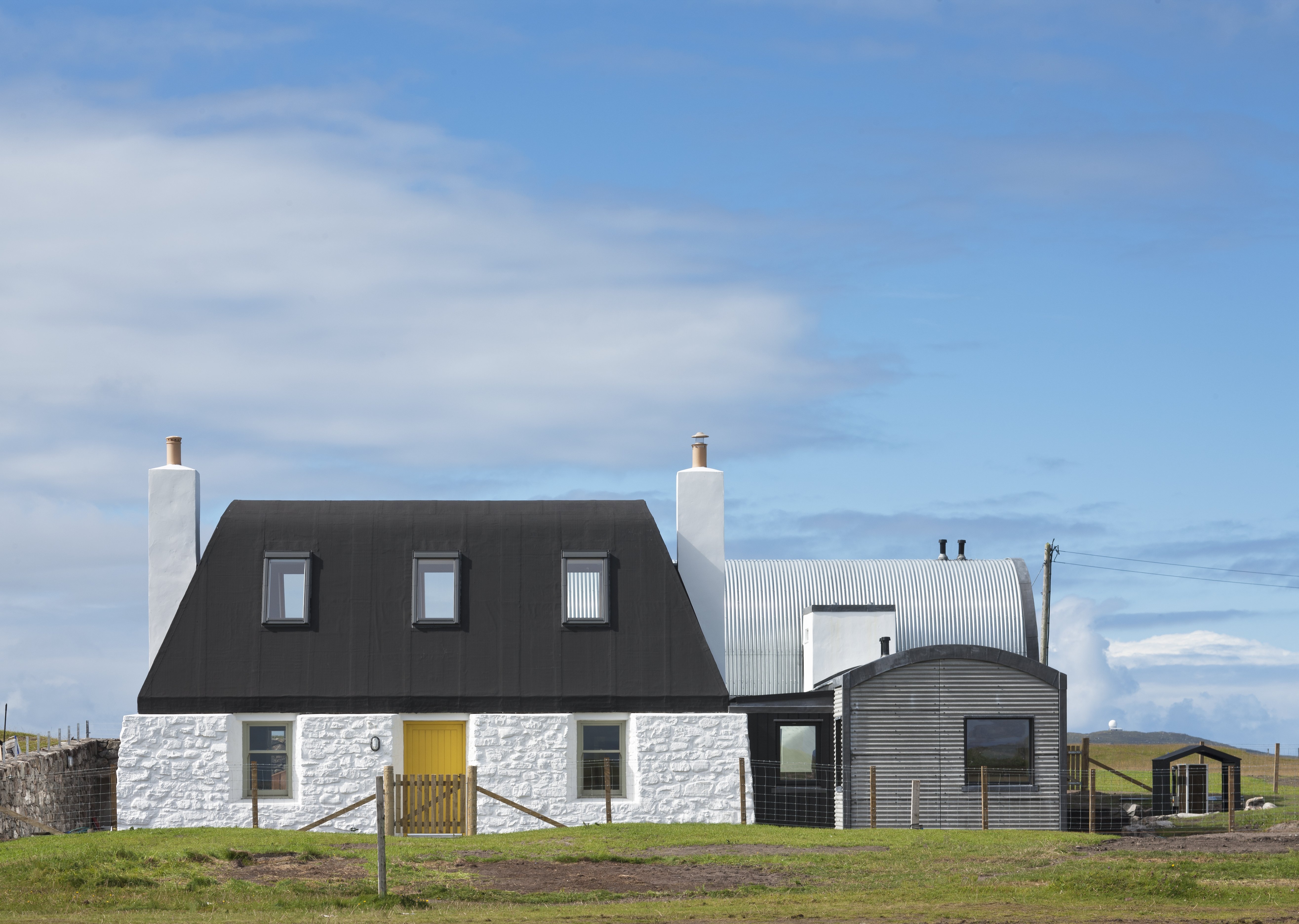
Made for multigenerational holidays on the beautiful Hebridean island of Tiree, House No 7 is a cluster of familiar forms that aren’t really architecture at all, an agricultural family grown from the machair. The three parts – a traditional wide-walled cottage for sleeping, a corrugated steel-clad barn for living and a functional utility shed containing much-needed welly storage – group around a sheltered central hall, their strong exteriors facing the wind to protect a softer inside.
A cluster of stubby, functional-looking blobs huddled together on the tiny island’s southern coast.
Rory Olcayto, Architects' Journal

Materials inside are simple. The barrel vault is lined with skirting boards, set in bays.

The elements give the feel of having been accrued over time, with changes of level, light openings and interlocking spaces.
This house is notable for the tactile pleasure which is invoked by every simple activity, even just opening a door.
Judges' citation, RIBA Manser Medal

Windows are cut to frame views across the machair to the sea.

The living space is clad in the same corrugated sheeting as a crofter’s shed.
“There’s nothing anywhere else in the UK quite like Tiree. Compared even to its sister Atlantic outcrops off the west coast of Scotland, Tiree is still a world away… Which helps make it one of the windiest places in Britain – there are no trees to smother gales into something resembling a breeze and looking westwards, the next lump in the water you’ll come across is Canada.
I was there in mid January. And guess what: it was sunny. It was raining too, and there were frequent lovely rainbows set against formidable grey-black skies one minute and what looked like computer-generated cyan-blue skies the next. But there was something strange about the rain: it didn’t touch the ground. Instead, the wind blew it across the island into a hovering band of watery mist that was actually quite pleasant to walk through.
There are other, quite specific elements that make Tiree special. Machair, the rare habitat local to the Hebrides, is one and its almost luminescent yellow, white and purple flowers are pretty in the extreme. Machair is a type of coastal dune pasture with a high shell content that provides a fertile agricultural base. And it’s everywhere you look.
…
From the outside, the building resembles a mash-up of all the kinds of crofts described in the Pevsner guide. If you think that there is something awkward about how the masses cohere, from the outside, you would be right. It is like that in the flesh too. It is not a drawback, mainly because this is a building that really works as a kind of private townscape, Each distinct element of it overlooks, or looks up to, another part, an approach that perhaps stems from Kerr’s time at BDP where the former chairman, Tony McGuirk, specialised in this kind of ‘atomised cluster that is really one building’ approach.
The building’s real success is the home it creates within its ever-so-slightly overworked shell. Once you enter through the front door, you alight onto the concrete floor of the ‘hall’. It’s more like a kind of street corner or crossroads; with steps down to the master bedroom, steps up to the barrel-vaulted kitchen (the heart of this family home) and views up to the chimney through a generous glazed roof and also into the studio-style painting room (with a table that turns into a bed – it’s a big family).
There is plenty of room. You will not bang your bones on table edges or corners into rooms. It’s warm. Friendly. And, dare I say it: cosy. The plan has been carefully thought through. I know it works because of one simple test: I stayed overnight, and managed to find my way down from the first floor guest house, across the hall, up the steps to the kitchen and pour myself a glass of water without switching the lights on. It was pitch black. How about that? It was simply a matter of familiarity, despite the spatial complexity that comes together to make this the place it is.”
Rory Olcayto, Architects' Journal









